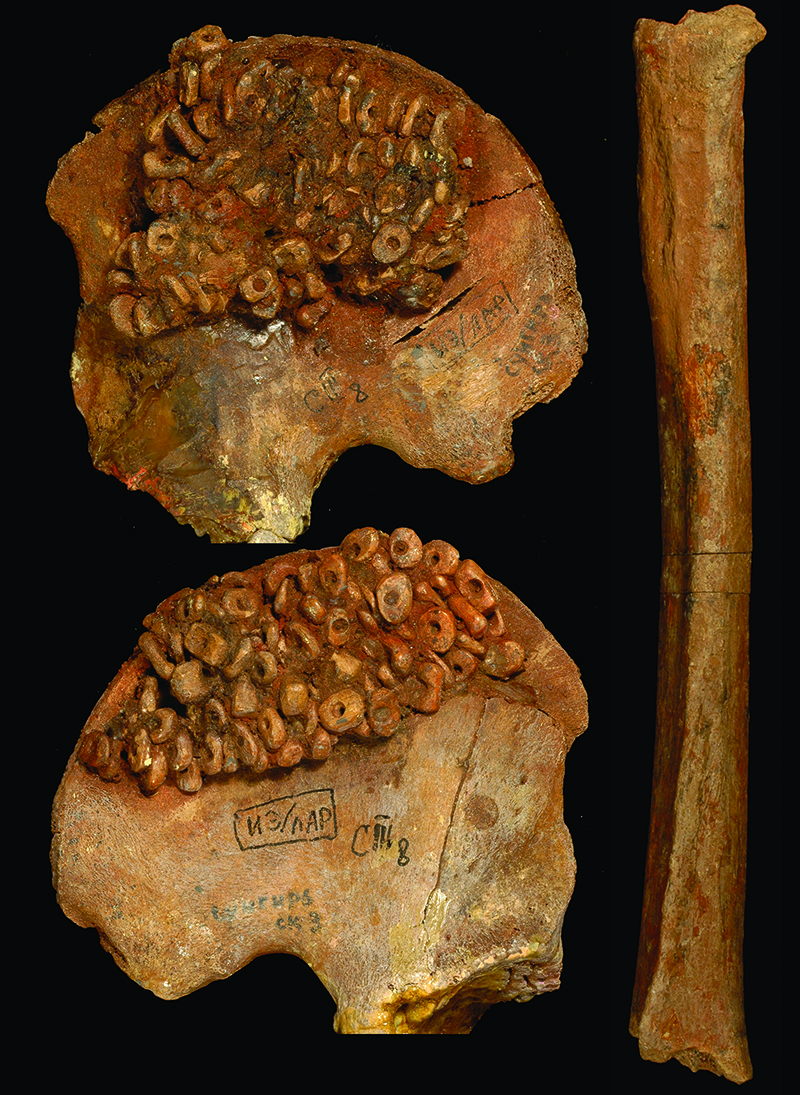Photos: 2 paleolithic boys were buried with fox teeth and spears
Introduction

About 34,000 years ago, a hunter-gatherer group buried two young boys who had physical conditions in elaborate graves, a new study finds.
One boy had short and bowed thighbones, and the other was likely bedridden and had trouble eating, as his teeth showed no wear and tear. However, they still received riches galore - including more than 10,000 mammoth ivory beads, more than 20 armbands, about 300 pierced fox teeth and 16 ivory mammoth spears.
These boys had specular treasures compared with the other people buried at the site in Sunghir, Russia. This suggests that the Paleolithic group had complex social behaviors, and treated people differently, likely both in death and in life. [Read more about the Paleolithic burial]
Paleolithic site

Researchers have known about Sunghir, an archaeological site on the northeast outskirts of Vladimir, Russia, for about 50 years. The site was excavated between 1957 and 1977.
Red ochre and beads

Like other burials from the Paleolithic, the bodies at Sunghir are covered with red ochre. This colored photomontage shows the remains of a roughly 40-year-old man who is covered with mammoth ivory beads. It's likely that the beads were sewn onto the man's clothing, which has since decayed.
"The fact that they all have lots of beads probably suggests that they had clothing with lots of beads on it all the time," study co-lead researcher Erik Trinkaus, a professor of anthropology at Washington University in St. Louis, told Live Science.
Fatal injury

Photos showing the adult man and his ochre-stained skull. Notice an incision in his neck vertebra (white arrow) - an injury that likely led to his immediate death.
Two boys

A colored photomontage of the two boys arranged head to head. Despite their young ages and physical conditions, the boys received an extravagant burial.
Unusual bones

The 12-year-old boy didn't have much wear on his teeth (top left and bottom left), indicating that he likely ate soft foods that didn't require much grinding. He also had a skull with an unusual shape, the researchers said.
The thighbones of the 10-year-old boy (right) were short and bowed.
Grave goods

The 10-year-old boy had ivory beads and ochre on the upper part of his hip bones, known as the ilia. Next to it is the thighbone of an adult that was placed in the 12-year-old boy's grave.
Sign up for the Live Science daily newsletter now
Get the world’s most fascinating discoveries delivered straight to your inbox.
Fox teeth and mammoth ivory beads

Photos of the 10-year-old boy (left) and 12-year-old boy (right). The boys are covered with mammoth ivory beads and pierced fox canines. They're also lying next to ivory spears, one of which has a disk on it, the researchers noted.
"Already at this time period, which is very early in the Upper Paleolithic, we already have a diversity and a complexity of human social behavior that is much more than is normally projected for hunters and gatherers at this time period," Trinkaus said. "And it's reflected in their mortuary behavior."
[Read more about the Paleolithic burial]

Laura is the archaeology and Life's Little Mysteries editor at Live Science. She also reports on general science, including paleontology. Her work has appeared in The New York Times, Scholastic, Popular Science and Spectrum, a site on autism research. She has won multiple awards from the Society of Professional Journalists and the Washington Newspaper Publishers Association for her reporting at a weekly newspaper near Seattle. Laura holds a bachelor's degree in English literature and psychology from Washington University in St. Louis and a master's degree in science writing from NYU.









